Remove the radiator upper hose (A) and lower hose (B).
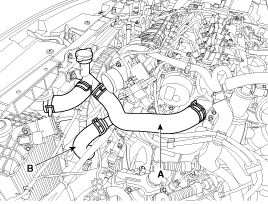
Install the radiator hoses as shown in illustrations.

Remove the cooling fan.
(Refer to Cooling System - "Cooling Fan")
Remove the radiator upper hose (A) and lower hose (B).

Install the radiator hoses as shown in illustrations.

Disconnect the ATF cooler hoses.
(Refer to Automatic Transaxle System - "Automatic transaxle")
Remove the front bumper cover.
(Refer to Body - "Front Bumper Cover")
Remove the head lamps.
(Refer to Body Electrical System - "Head Lamps")
Remove the air guard (A).
Tightening torque :
3.9 ~ 5.9 N.m (0.4 ~ 0.6 kgf.m, 2.9 ~ 4.3 Ib-ft)
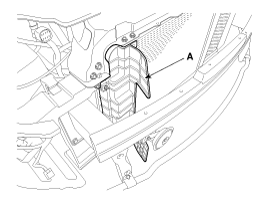
Remove the radiator upper bracket (A).

Remove the A/C pipe mounting bracket bolt (A).
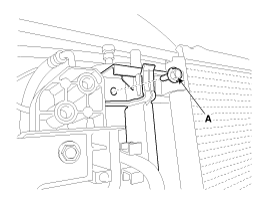
Separate the A/C condenser from the radiator and then lift up the radiator assembly (A).
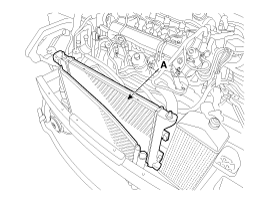
Install in the reverse order of removal.
Fill with engine coolant.
(Refer to Cooling System - "Coolant").
Start the engine and check for leakage.
Recheck engine coolant level.
Remove the radiator cap, wet its seal with engine coolant, then install it on a pressure tester.

Apply a pressure of 93.16 ~ 122.58 kPa
(0.95 ~ 1.25 kg/cm², 13.51 ~ 17.78 psi).
Check for a drop in pressure.
If the pressure drops, replace the cap.
Wait until engine is cool, then carefully remove the radiator cap and fill the radiator with engine coolant, then install it on the pressure tester.
Connect a pressure tester to the radiator and apply a pressure of 93.16 ~ 122.58 kPa (0.95 ~ 1.25 kg/cm², 13.51 ~ 17.78 psi).
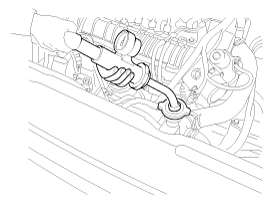
Inspect for engine coolant leakage and drop in pressure.
Remove the tester and reinstall the radiator cap.
Check for contamination of engine oil in the coolant and vice versa.